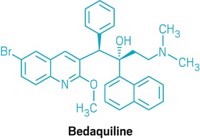Advertisement
Grab your lab coat. Let's get started
Welcome!
Welcome!
Create an account below to get 6 C&EN articles per month, receive newsletters and more - all free.
It seems this is your first time logging in online. Please enter the following information to continue.
As an ACS member you automatically get access to this site. All we need is few more details to create your reading experience.
Not you? Sign in with a different account.
Not you? Sign in with a different account.
ERROR 1
ERROR 1
ERROR 2
ERROR 2
ERROR 2
ERROR 2
ERROR 2
Password and Confirm password must match.
If you have an ACS member number, please enter it here so we can link this account to your membership. (optional)
ERROR 2
ACS values your privacy. By submitting your information, you are gaining access to C&EN and subscribing to our weekly newsletter. We use the information you provide to make your reading experience better, and we will never sell your data to third party members.
Pharmaceuticals
Pedagogy On Platinum Drugs
by Ann M. Thayer
June 28, 2010
| A version of this story appeared in
Volume 88, Issue 26
1965
Barnett Rosenberg at Michigan State University reports the effect of platinum on bacteria.
1967
Identification of cis-[PtCl4(NH3)2] as the causative agent.
1968
Pt compounds shown to have antitumor activity. Cisplatin is found to be active in a mouse model of cancer. (1)
1970
S. C. Dhara publishes a method for the rapid synthesis of cisplatin.
1971
Cisplatin tested in humans.
1973
Structure-activity relationships established for Pt compounds by Michael J. Cleare and James D. Hoeschele at Michigan State University.
1976
Oxaliplatin discovered by Yoshinori Kidani and coworkers at Nagoya University (2)
1978
U.S. Food & Drug Administration approves cisplatin. Sold by Bristol-Myers Squibb as Platinol.
1982
First patient tested with carboplatin, discovered by Johnson Matthey, the U.K. Institute for Cancer Research (ICR), and Bristol-Myers Squibb. (3)
1986
Carboplatin approved in Europe and sold by Bristol-Myers Squibb as Paraplatin.
1989
FDA approves carboplatin. Debiopharm licenses oxaliplatin from Nagoya University.
1993
First patient tested with satraplatin, discovered by Johnson Matthey, ICR, and Bristol-Myers Squibb. It is the first oral platinum drug candidate. (4)
1994
Sanofi-Aventis licenses oxaliplatin from Debiopharm.
1996
Oxaliplatin approved in Europe and sold by Sanofi-Aventis as Eloxatin. Patent on cisplatin expires.
1997
First patient treated with picoplatin, developed by Johnson Matthey, ICR, and Bristol-Myers Squibb and licensed to AnorMED. (5)
1999
Novuspharma, a 1998 Roche/Boehringer Mannheim spin-off, starts clinical trials of triplatin tetranitrate (BBR3464), discovered earlier by Nicholas Farrell at Virginia Commonwealth University. (6)
2000
Patent on carboplatin expires in Europe.
2001
Spectrum Pharmaceuticals licenses satraplatin from Johnson Matthey. AstraZeneca decides to stop picoplatin development with AnorMED.
2002
FDA approves Eloxatin. Spectrum Pharmaceuticals licenses satraplatin to GPC Biotech for development.
2004
Patent on carboplatin expires in U.S. AnorMED licenses picoplatin to NeoRx. Cell Therapeutics (merged with Novuspharma in 2003) halts BBR3464 after Phase II.
2006
Oxaliplatin loses patent protection in Europe.
2007
Phase III clinical trial of picoplatin initiated by Poniard Pharmaceuticals (formerly NeoRx). GPC Biotech says that satraplatin failed to meet endpoint in Phase III trial and withdraws filing for FDA approval. Yakult Honsha agrees to develop satraplatin in Japan.
2008
GPC Biotech's partner Celgene withdraws European regulatory filing and terminates development agreement for satraplatin.
2009
GPC Biotech merges with Agennix, which says it will not develop satraplatin further without the help of a partner.
2010
Poniard reports that picoplatin failed to meet Phase III clinical trial endpoint and is evaluating options for further development. Cell Therapeutics reports antitumor activity in new class of bisplatinates.
2012
Generic versions oxaliplatin to be authorized for sale in U.S.
2013
Oxaliplatin to lose patent protection in the U.S.
Sources: Company information; Nature Reviews 2007, 7, 573; J. Chem. Ed. 2006, 83, 728; Dalton Trans. 2009, 10651. and references within.









Join the conversation
Contact the reporter
Submit a Letter to the Editor for publication
Engage with us on Twitter